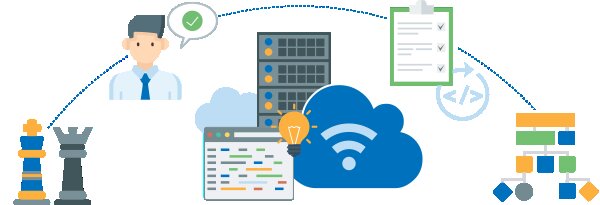Internet of Things (IoT)
The Internet of Things, or IoT, refers to the billions of physical devices around the world that are now connected to the internet, collecting and sharing data. Thanks to cheap processors and wireless networks, it’s possible to turn anything, from a pill to an aeroplane, into part of the IoT. This adds a level of digital intelligence to devices that would be otherwise dumb, enabling them to communicate without a human being involved, and merging the digital and physical worlds.
A thing in the internet of things can be a person with a heart monitor implant, a farm animal with a biochip transponder, an automobile that has built-in sensors to alert the driver when tire pressure is low or any other natural or man-made object that can be assigned an IP address and is able to transfer data over a network.
Increasingly, organizations in a variety of industries are using IoT to operate more efficiently, better understand customers to deliver enhanced customer service, improve decision-making and increase the value of the business.

Benefits of IoT
The internet of things offers a number of benefits to organizations, enabling them to:
- Monitor their overall business processes;
- Improve the customer experience;
- Save time and money;
- Enhance employee productivity;
- Integrate and adapt business models;
- Make better business decisions; and
- Generate more revenue.
- IoT encourages companies to rethink the ways they approach their businesses, industries and markets and gives them the tools to improve their business strategies.
Consumer and Enterprise IoT Applications
In the consumer segment, for example, smart homes that are equipped with smart thermostats, smart appliances and connected heating, lighting and electronic devices can be controlled remotely via computers, smartphones or other mobile devices.
Wearable devices with sensors and software can collect and analyze user data, sending messages to other technologies about the users with the aim of making users’ lives easier and more comfortable. Wearable devices are also used for public safety — for example, improving first responders’ response times during emergencies by providing optimized routes to a location or by tracking construction workers’ or firefighters’ vital signs at life-threatening sites.
In healthcare, IoT offers many benefits, including the ability to monitor patients more closely to use the data that’s generated and analyze it. Hospitals often use IoT systems to complete tasks such as inventory management, for both pharmaceuticals and medical instruments.
Smart buildings can, for instance, reduce energy costs using sensors that detect how many occupants are in a room. The temperature can adjust automatically — for example, turning the air conditioner on if sensors detect a conference room is full or turning the heat down if everyone in the office has gone home.
In agriculture, IoT-based smart farming systems can help monitor, for instance, light, temperature, humidity and soil moisture of crop fields using connected sensors. IoT is also instrumental in automating irrigation systems.
In a smart city, IoT sensors and deployments, such as smart streetlights and smart meters, can help alleviate traffic, conserve energy, monitor and address environmental concerns, and improve sanitation.